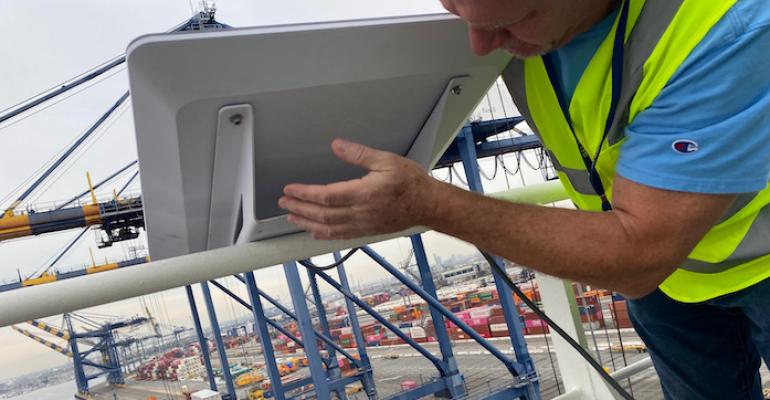The low latency SpaceX Starlink network which was launched for maritime earlier this year has been described as potentially revolutionary and a game changer by users. The improvement in communications for crew welfare has been particularly highlighted.
While praise has been heaped on Starlink existing operators point to the lack of managed service offerings and an inconsistency of coverage. Players such as KVH and NSSLGlobal are turning to offering the LEO services of Starlink combined with managed VSAT, as well as other options such as 5G.
KVH’s single antenna TracNet system launched in July last year integrates VSAT, Ku-Band, 5G and 4G LTE, and wifi. The system connects the service providing the best performance and availability, automatically switching as conditions change.
Starlink is now being offering as an add-on plugged into the TracNet antenna.
Speaking to Seatrade Maritime News at Sea Asia 2023 recently Chris Watson, KVH’s Vice President of Marketing and Communications said, “So a lot of what we are looking at now are the trends towards hybrid and how do we make that happen, and how do we integrate other new and emerging services like Starlink or down the road OneWeb or Amazon.”
Looking specifically at Starlink he says they are seeing a lot of interest from customers to try the system but there are not willing to commit to it for 100% of their communications.
Watson saw two reasons to this, one was reliability, and that while when it works it’s a really good service, there are also stories of for example a cruise ship coming into port and eating up all the data and as result other customers experiencing a loss of service.
The second is that it is just a data pipe and does not come with adds such as enhanced cybersecurity and crew email.
“So, what we're seeing is commercial vessels and leisure customers who are willing to try it, they're interested in it, but they are not willing to commit 100% to it. Which is why the solution that we have where it's our system, combined with Starlink to create an even more robust package is something that we think is very appealing,” Watson explained.
Meanwhile NSSLGlobal has announced it is fusing its VSAT offering with Starlink’s LEO connectivity, for which it is an authorised reseller, which it says will meet the needs specialised needs of the maritime industry.
Launching FUSIONIPLEO NSSLGlobal said the service combined high availability business critical comms with high throughput, low latency connectivity for crew welfare services.
It said that FUSIONIPLEO was the result of three years of testing LEO network capabilities and would be delivered through its SMART@SEA network.
The company said it meant vessel operators would have access to security, reliability and increased options with an L-Band backup for guaranteed connectivity anywhere in the world.
“We’ve been consistent and vocal in our desire to see crew welfare become a priority, to prevent isolation and mental health issues at sea, help our customers benefit from their investment in training and to aid with long-term planning and crew retention,” said Sally-Anne Ray, Group CEO, NSSLGlobal
Copyright © 2024. All rights reserved. Seatrade, a trading name of Informa Markets (UK) Limited.
Add Seatrade Maritime News to your Google News feed.  |

